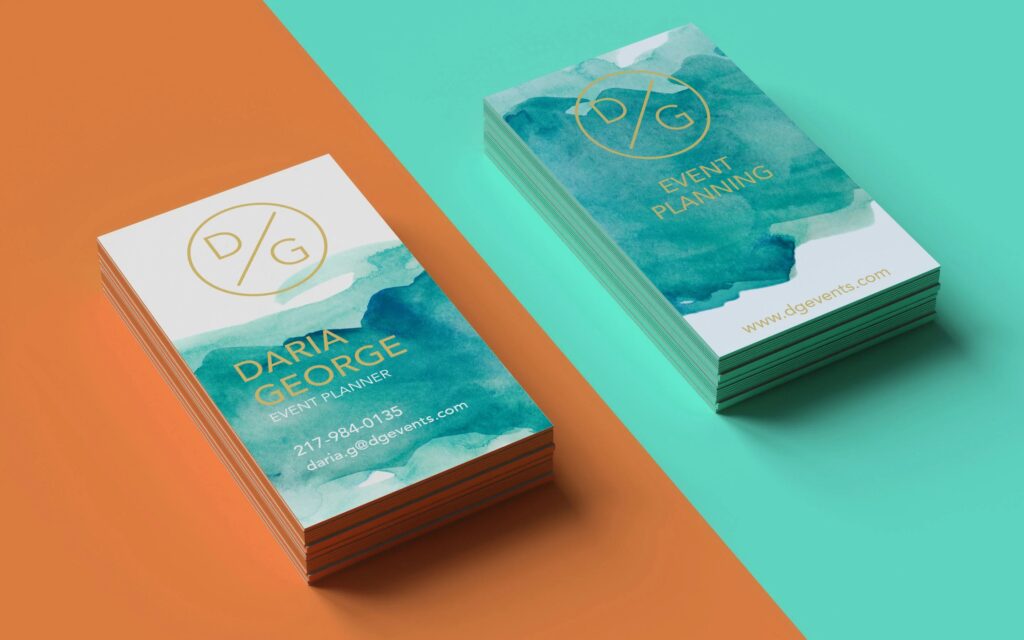Are you tired of business cards that just don’t leave a lasting impression? Well, don’t worry because there’s a solution that can really help reinforce your company’s brand consistency. By carefully considering the design elements on your business cards, you can create a powerful tool that not only represents your brand but also makes a lasting impact on potential clients and partners. But which design elements should you focus on? And how can they really reinforce your company’s brand? In this discussion, we’ll explore the key elements that can make your business cards a true reflection of your brand, leaving a lasting impact on those who receive them.
Colors and Fonts
Choosing the perfect combination of colors and fonts is crucial for enhancing your business card design and creating a consistent and visually appealing brand image. When designing your business card, it’s important to consider how colors and fonts can establish a strong brand identity and leave a lasting impression on your potential clients or customers.
Colors have the power to evoke emotions and convey meaning. Think about color psychology and the message you want to convey through your brand. For instance, blue is often associated with trust and reliability, while yellow represents energy and optimism. By selecting colors that align with your brand values and message, you can create a cohesive and memorable brand image.
Fonts also play a significant role in business card design. They can communicate the personality and tone of your brand. Whether you want to appear professional and formal or modern and creative, choosing the right font is essential. Make sure to opt for fonts that are legible and easy to read, even at small sizes. It’s also important to maintain consistency with your fonts across all your branding materials to create a cohesive and recognizable brand identity.
When combining colors and fonts, ensure that they complement each other. Select a font that matches the style and personality of your brand, and pair it with colors that create a visually appealing contrast. This combination will help your business card design stand out and make a memorable impression.
Logo Placement
Now that you’ve created a cohesive and visually appealing brand image by carefully selecting colors and fonts, it’s time to strategically place your logo on your business card. This will enhance brand recognition and leave a lasting impression. Logo placement is important for maintaining brand consistency. Here are five key things to consider:

- Size and Proportion: Make sure your logo is visible and legible on your business card. It shouldn’t be too small or too large, but just right for the overall design.
- Placement: Position your logo in a prominent spot on your business card, like the top or center, where it can catch the eye right away. This will reinforce brand recognition and make a strong impact.
- Integration: Blend your logo seamlessly with other design elements on your business card. You can incorporate the logo into a border, background, or other graphics to create a cohesive visual presence.
- Consistency: Keep your logo placement consistent across all your marketing materials, including your website, social media profiles, and printed materials. This consistency reinforces your brand identity and helps customers recognize and remember your logo.
- Whitespace: Give your logo some breathing room by surrounding it with whitespace. This not only enhances its visual appeal but also draws attention to your logo, making it stand out even more.
Tagline Placement
When it comes to placing your tagline on your business card, it’s important to get it just right. Your tagline is a powerful tool for conveying your brand’s essence, so you want to make sure it’s strategically positioned and visually appealing. Here are a few key things to consider when deciding where to place your tagline on your business card.
First and foremost, when considering metal card pricing, your tagline should be easy to read. It should be placed in a prominent location that catches the recipient’s eye. One popular option is to put it directly below your logo. This creates a clean and cohesive visual hierarchy, with the tagline and logo working together to reinforce your brand message.
Another option is to place your tagline on the back of your business card. This can be a clever way to surprise and delight recipients as they flip over the card and discover your tagline. However, keep in mind that not everyone may take the time to explore the back of the card, so this placement may be more effective for those already familiar with your brand.
Regardless of where you choose to put your tagline, it’s important to ensure that it’s legible and visually balanced with the rest of your design. Consider factors like font size, color, and alignment to make sure your tagline stands out without overpowering other elements on the card.
Consistent Brand Messaging
Now that you’ve strategically placed your tagline on your business card, it’s time to make sure your brand messaging is consistent across all your marketing materials. Consistent brand messaging is key for establishing a strong brand identity and building trust with your target audience. Let’s take a look at five important elements to consider when creating consistent brand messaging:
- Brand voice: Develop a consistent tone and style of communication that reflects your brand personality. Whether it’s formal, friendly, or quirky, make sure your messaging aligns with your brand image.
- Key messages: Identify the core messages you want to convey about your brand and make sure they’re consistently communicated across all marketing materials. These messages should resonate with your target audience and set your brand apart from competitors.
- Visual identity: Use consistent visual elements like colors, fonts, and imagery to create a cohesive brand identity. Your business card should match the overall look and feel of your website, social media profiles, and other marketing materials.
- Storytelling: Craft a compelling brand story that connects with your audience on an emotional level. Use your business card as a storytelling tool by incorporating elements that reflect your brand’s values, mission, and unique selling points.
- Call to action: Every marketing material, including your business card, should have a clear call to action. Whether it’s encouraging people to visit your website, follow you on social media, or contact you for more information, make sure it aligns with your overall brand messaging.
Design Elements That Reflect Company Values
When it comes to creating a visually compelling representation of what your brand stands for, it’s important to incorporate design elements that embody your company values. Your business card is more than just contact information; it’s an opportunity to showcase your company’s values and beliefs. The design elements you choose should reflect the essence of your brand and resonate with your target audience.
One way to incorporate your company values into your business card design is through the use of colors. Color psychology plays a significant role in conveying emotions and associations. For example, if your company values innovation and creativity, you can use vibrant and bold colors to evoke a sense of energy and excitement. On the other hand, if your brand is focused on sustainability and eco-friendliness, earthy tones and organic textures can effectively communicate those values.
Typography is another design element that can reflect your company values. The choice of fonts can convey different emotions and personalities. For instance, a clean and modern font may suggest professionalism and efficiency, while a more decorative and whimsical font can convey creativity and playfulness.
Additionally, imagery and graphics can play a crucial role in reflecting your company values. Whether it’s through illustrations, photographs, or icons, visual elements can evoke specific emotions and associations. If your brand values teamwork and collaboration, incorporating images of people working together can reinforce that message.
